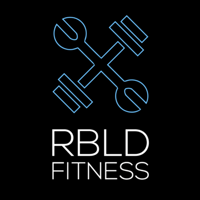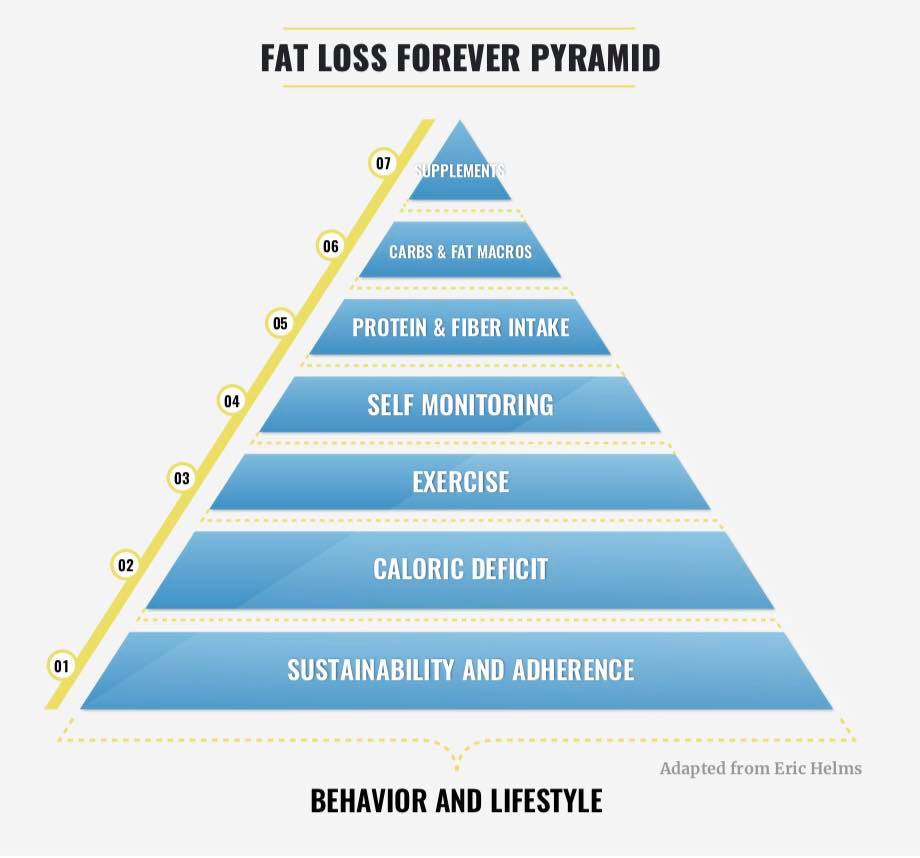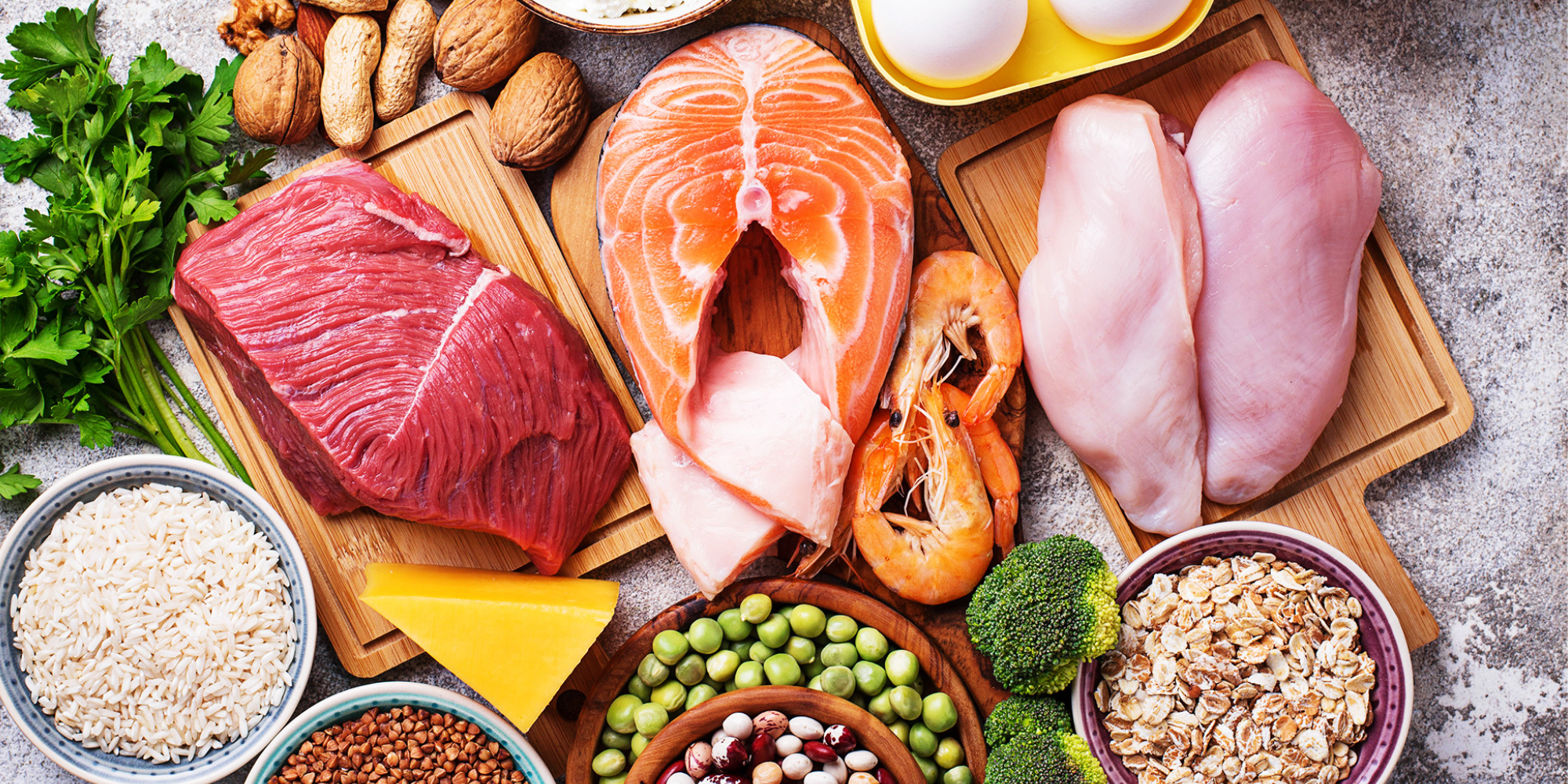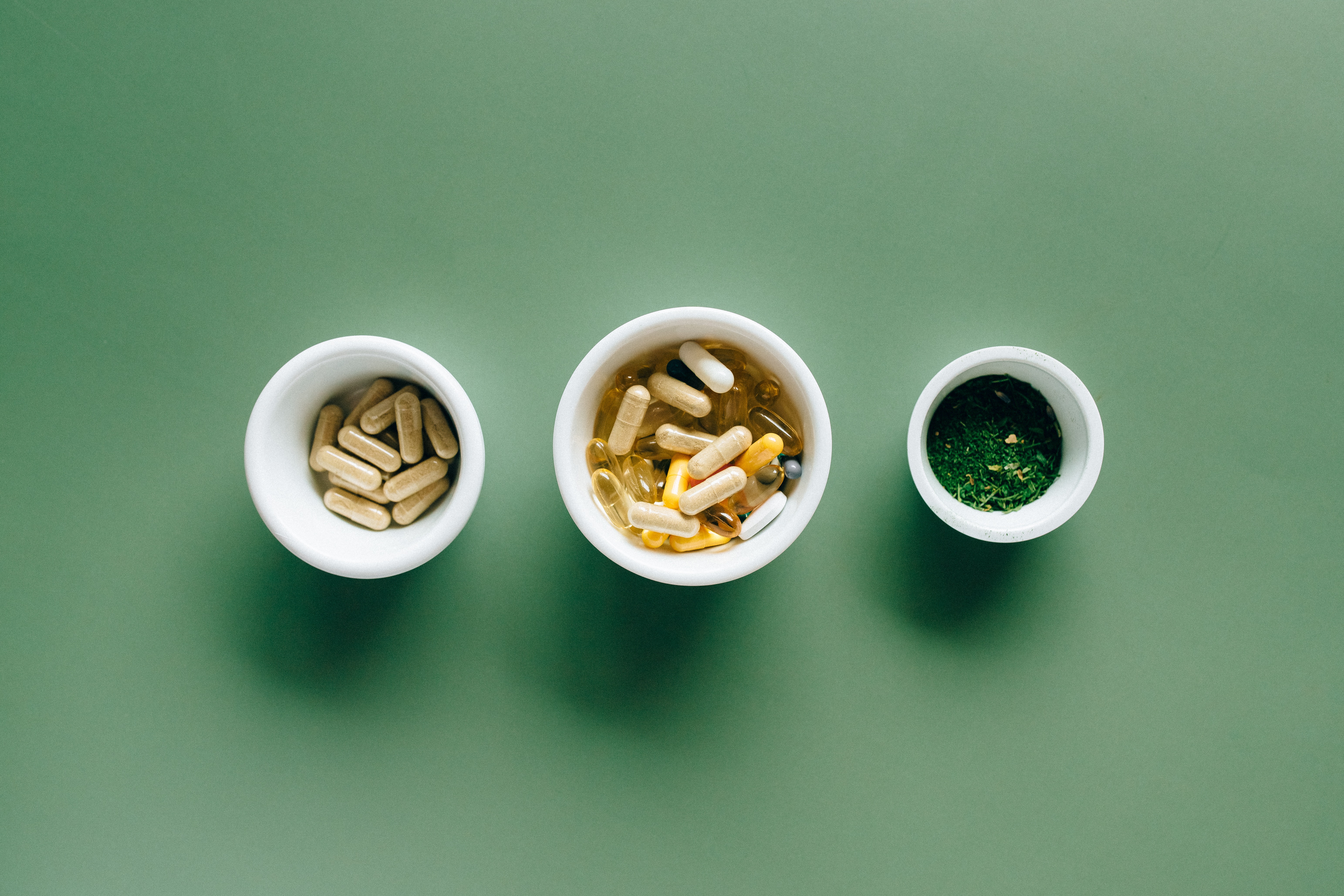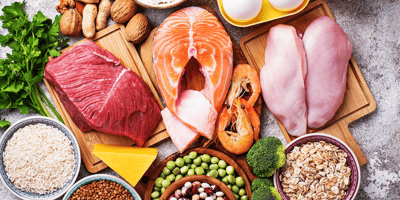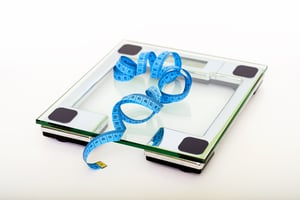Fat Loss 101: A Simple and Comprehensive Guide to Lasting Results
The fundamental understanding of how we lose and gain body fat was once fairly clear, but in recent years it has become shrouded in mystery and confusion thanks to misinformation from numerous people with an opinion and a craving for money and attention.
By contrast, it took me years of research, experimentation and refinement to put all the pieces together to form a synthesized and simple understanding of fat loss. You're about to read the result of those efforts.
You won't learn every possible thing there is to know from this article, but you will learn everything you need to know about fat loss and its role in your overall fitness journey.
Let's make fat loss simple again!
Contents of This Article
- The Fat Loss Pyramid of Importance
- 6 Basic Biology Facts About Fat Loss
- How to Lose Fat and Keep it Off
- Sustainability & Adherence
- Calorie Deficit
- Exercise
- Self-Monitoring
- Protein & Fiber
- Fat & Carbs
- Supplements
- Final Thoughts
- Summary
The Fat Loss Pyramid of Importance
Above is a diagram of the most important factors in fat/weight loss listed from the most important (at the bottom) to the least important (at the top). This was adapted from the work of Eric Helms and refined by Dr. Layne Norton and Peter Baker, authors of Fat Loss Forever: How to Lose Weight and Keep it Off - which is easily the most comprehensive and informative books on the topic of fat loss I've ever read.
The diagram above is primarily formulated by long-established scientific findings as well as the experiences they've had as researchers and coaches.
* Please take 30 seconds to observe*
Did the order surprise you?
Perhaps you already guessed some of this, but not all?
When I first learned of this years back, I had two thoughts:
- Wow! Fat loss is simpler than I thought!
- This is not the story that lots of nutrition companies, infomercials, and influencers tell!
For instance, have you ever heard something like this before? “Lose weight without working out! One pill a day, and just watch the fat melt off!”
The intentionally simplistic marketing behind "get skinny quick" schemes are as cringy as they are misleading, but not for the reasons you might think. For instance, diet pills can actually be quite effective for weight loss...
...at first...dun dun DUUNNNNNNNN!
Diet pills don't contain some magic fat-burning substance. Instead, most of them on the market are usually comprised of an appetite-suppressing compound that causes the following chain of events:
- I feel full
- I consume less food (aka fewer calories)
- I achieve a calorie deficit - the primary biological requirement for fat loss
For the sake of brevity in this article, I won't get into whether I think diet pills are "good" or "bad" because it depends on a number of factors. What I will say is that when people inevitably get tired of the side-effects, the cost, or they achieve the desired goal and don’t need them for weight loss anymore, things like this happen:
- Cravings return
- Metabolism changes
- Hormonal balance is out of whack
- We return to old eating habits (then return to a calorie surplus)
- Body fat is regained
- Etc.
Just like anything else, pills don’t get to the root of the problem. They might be able to help in the short term, but we need to have a plan for sustainable progress and mindset change overall.
Rely on self, not substance. For the rest of the article though, let's get down to brass tacks.

6 Basic Biology Facts About Fat Loss
You can't understand how fat loss and gain works without first understanding the information in this section.
1. Energy = Calories
Our bodies require energy to function, and calories are the unit of energy that we measure it by. So when I refer to calories, I am also referring to energy, and vice versa.
The total number of calories we burn on a daily basis is called our Total Daily Energy Expenditure, and this comprises of:
- Basal Metabolic Rate (BMR) - How much energy (calories) we expend (burn) in a rested state. BMR accounts for about 70% of the average person's daily TDEE.
- Thermic Effect of Food (TEF) - The additional calories we burn from consuming and digesting food. Some food requires more energy to digest than others. TEF accounts for about 7.5% of the average person's daily TDEE.
- Non-Exercise Activity Thermogenesis (NEAT) - Calories we burn by small movements like fidgeting, sitting down, standing up, walking to the bathroom and kitchen, general movements, etc. NEAT accounts for about 12.5% of the average person's daily TDEE.
- Exercise Activity Thermogenesis (EAT - aka EXERCISE) - Calories we burn from intentional exercise/workouts. EAT accounts for about 10% of the average person's daily TDEE.
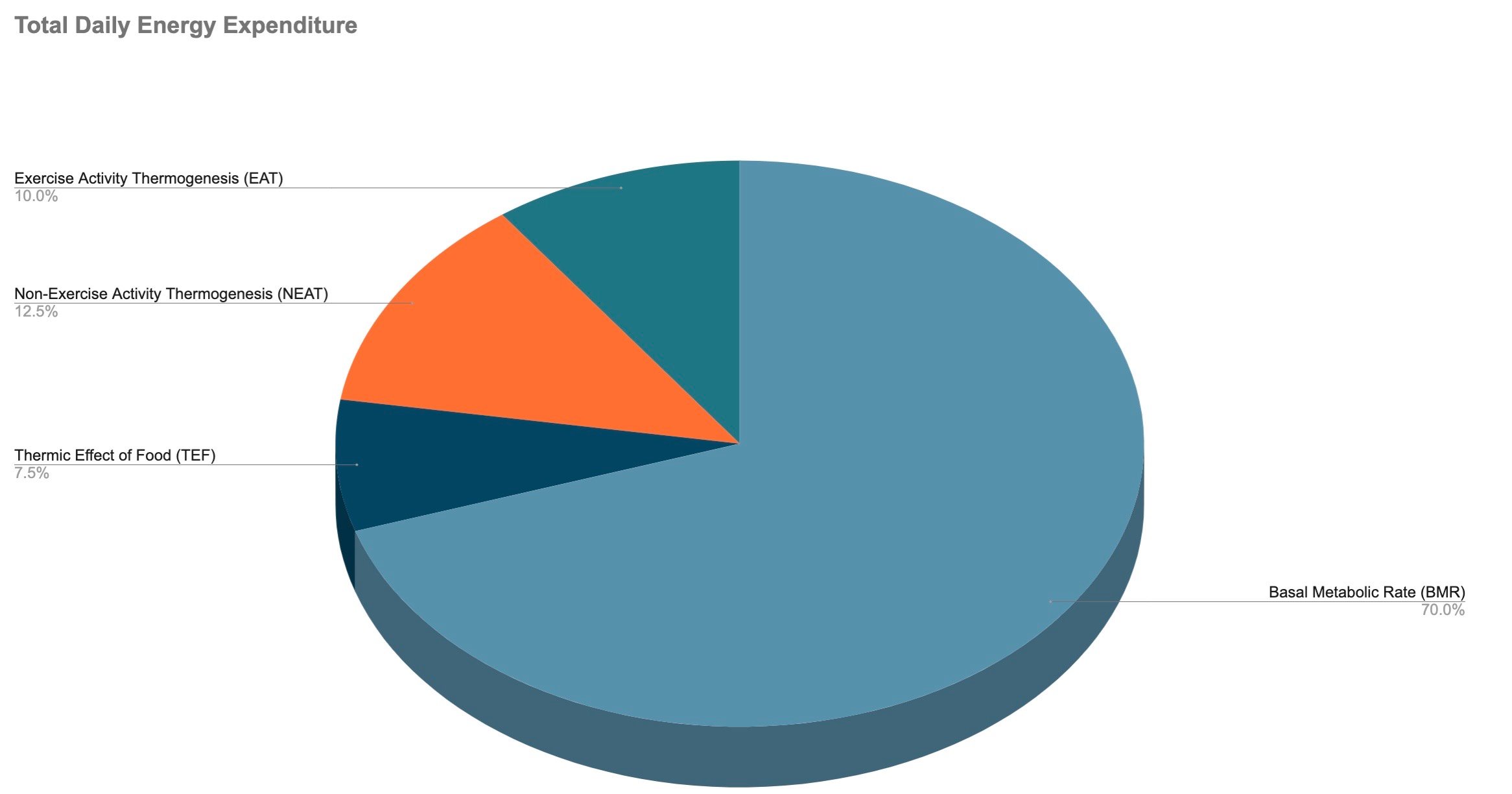
Did it shock anyone to read that exercise only makes up about 10% of our daily TDEE? Or how about the fact that NEAT (aka our general movements) are more impactful? I know it surprised me when I learned this.
Arguably the most important note to make about this is that our diet plays a much larger role in our TDEE than exercise.
2. Your Biology and Your Activity Make Up Your TDEE
There are two primary components that determine how much energy (calories) a person needs to function - Your physical makeup (Biology) AND your activity:
Your Biology - Your body burns a certain number of calories depending on your unique combination of sex, height, age, activity level, and other health and hormonal factors.
Your Activity - Your body also burns a certain number of calories depending on all of your physical movements, choices of food and general functioning throughout the day.
Every person has a unique TDEE makeup, and it is incredibly useful to identify yours and make decisions regarding your body recomposition based on that information rather than based on assumptions.
As Douglas Adams once said, "The most misleading assumptions are the ones you don't even know you're making."
Click here for a free and easy tool to determine your approximate TDEE. It follows the gold standard Mifflin St. Jeor Calculation.
3. Calorie Deficit (-), Surplus(+), and Maintenance (=)
- Calorie Surplus (+) - Consuming more calories than you burn results in the storage of that surplus energy as body fat.
- Calorie Deficit (-) - Consuming fewer calories than you burn results in the burning of those calories as well as stored body fat for energy/fuel (aka Fat Loss).
- Calorie Maintenance (=) - Consuming the same number of calories as you burn results in retaining the same amount of body fat.
4. Approximately 3,500 calories = 1 Pound of Body Fat
1 (0.453592 kg) pound of body fat is approximately equal to 3,500 calories, so you can reasonably expect to lose 1 pound of fat if you achieve a calorie deficit of 3,500 calories, and you can reasonably expect to gain 1 pound of fat if you consume a surplus of 3,500 calories.
If your goal is to lose 1 pound of body fat per week, this rule of thumb dictates that a 500 calorie deficit per day will put you on pace to do so, but make sure to take note of the next section.
Using the 3,500 calories = 1 pound of fat calculation is simply a tool to make informed decisions. Like anything, don't drive yourself crazy if the math doesn't line up exactly with your results. It's still better to know this information than to not know it.
5. TDEE Changes With Metabolic Adaptation
This section is very important!
Many people don’t realize that TDEE changes as we lose and gain weight and as we change the makeup of our physique (i.e. add or lose lean body mass/muscle). The two primary reasons for this are fairly simple.
- A lighter body requires less energy: We need energy (calories) to function, and it takes fewer calories to fuel a lighter body than it takes to power a heavier one.
- Metabolic adaptation: Many people who lose a significant amount of body weight experience a lower than normal TDEE because their bodies are attempting to protect them from what it perceives to be a trend toward starvation. And those who yo-yo diet often experience this even more.
It’s helpful to know that, as you lose weight, your TDEE will decrease as well. For example:
- Let’s say you started your weightloss journey with a TDEE of 2,500 calories per day.
- By consuming 2,000 calories per day, you would achieve a 500 calorie deficit.
- A deficit of 500 calories per day x 7 days per week = 3,500 calories per week (about 1lb of fat)
If you followed this diet and lost 25lbs:
- Your TDEE will have reduced, perhaps to something like 2,300 calories per day (a 200 calorie difference)
- By consuming 2,000 calories per day, you would now only achieve a 300 calorie deficit.
- A deficit of 300 calories per day x 7 days per week = 2,100 calories per week (About 0.6 lbs of fat)
As this happens, you’ll have three choices if you wish to continue to lose weight at the same pace you had become accustomed to at the beginning:
- Reduce your caloric intake
- Increase your energy expenditure through more exercise
- Both
You could also choose to pause, maintain your bodyweight, slow the pace of your calorie restriction, reverse diet, etc.
And while it might feel upsetting to have to work even harder than you have been to get results at the same pace you had become accustomed to, it's helpful to remember that:
- The pace of progress is less important than the sustainability of progress. If slowing down helps you, that's better than burning out and quitting.
- These are good problems to have compared to the alternative problems that come with obesity, immobility, lacking control of your diet, or simply regaining the weight you've lost so far.
Remember, few important things in life are easy, but they are worth the work it takes to have them.
6. Weight Loss v. Fat Loss
Weight loss and Fat loss are two different things:
- Weight Loss = The loss of the measured weight of your entire body including fat, bone, muscle, water, organs, etc.
- Fat Loss = The loss of body fat only
It's very important to remember that the number on the scale does not represent a 1:1 correlation between loss/gain of fat because other factors like muscle mass and water retention play a big factor on a daily basis. With that said, the goal for most of us is usually to minimize body fat and maximize or retain muscle mass.
Many people make the mistake of prioritizing the reduction of the number on the scale over body recomposition (losing fat and building muscle). This often results in the dreaded "skinny fat" look, not to mention lose of bone density, hair, strength, etc. You will experience much better immediate and long-term benefits by including strength training and general exercise into your weekly routine.
As always, to optimize your overall health, talk to your doctor about the right strategy for you.
How to Lose Fat and Keep It Off
Let's return briefly to the Fat Loss Pyramid of Importance. I want you to really pay attention to the order this is written (1-Most Important to 7-Least important):
- Sustainability and Adherence [of exercise and diet]
- Caloric Deficit
- Exercise
- Self-Monitoring
- Protein and Fiber Intake
- Macronutrients: Carbs and Fat Macros
- Supplements
There are many reasons for these factors to be prioritized the way they are, and the rest of this article will be devoted to breaking those down.
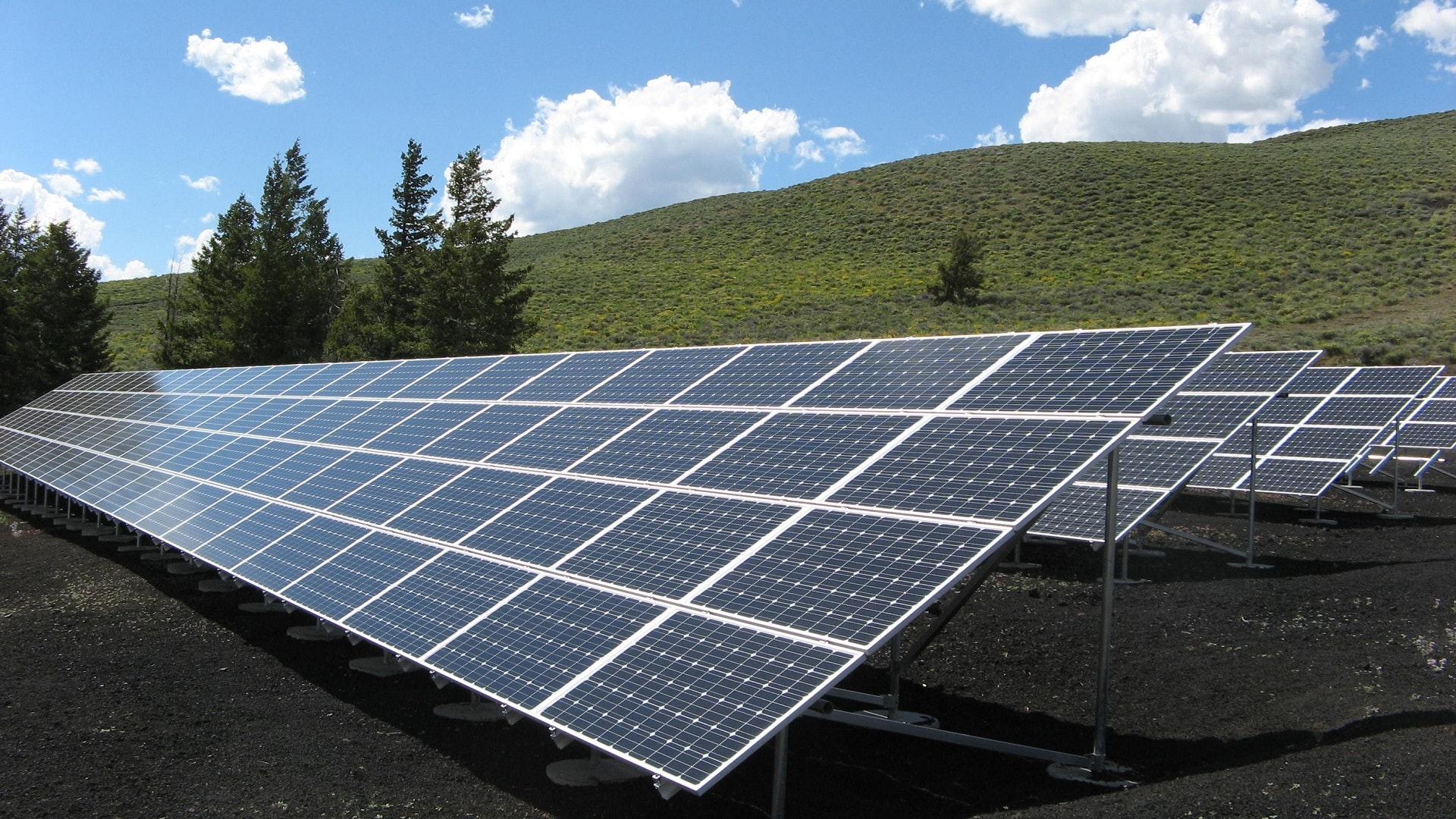
1. Adherence & Sustainability
Remember these quotes:
“A river cuts through rock, not because of its power, but because of its persistence.”
“Slow and steady wins the race.”
"You are what you do consistently."
Now tell me, which is better?
You lose 50 lbs in 6 months, but you gain it back within 3-5 years because the lifestyle is unsustainable.
-or-
You lose 25 lbs in 12 months, but you keep it off and keep going, slowly but surely.
The choice is obvious. Results don't matter much if they don't last. And sadly, studies show that roughly 80% of people who lose about 10% or more of their bodyweight will gain it back within 3-5 years.
I’m not going to beat a dead horse here. I said it before, and I’ll say it again: Find what sustains you, even if you’re not moving as quickly as you hoped.
No matter how slowly you’re moving, you’re still lapping everyone on the couch.
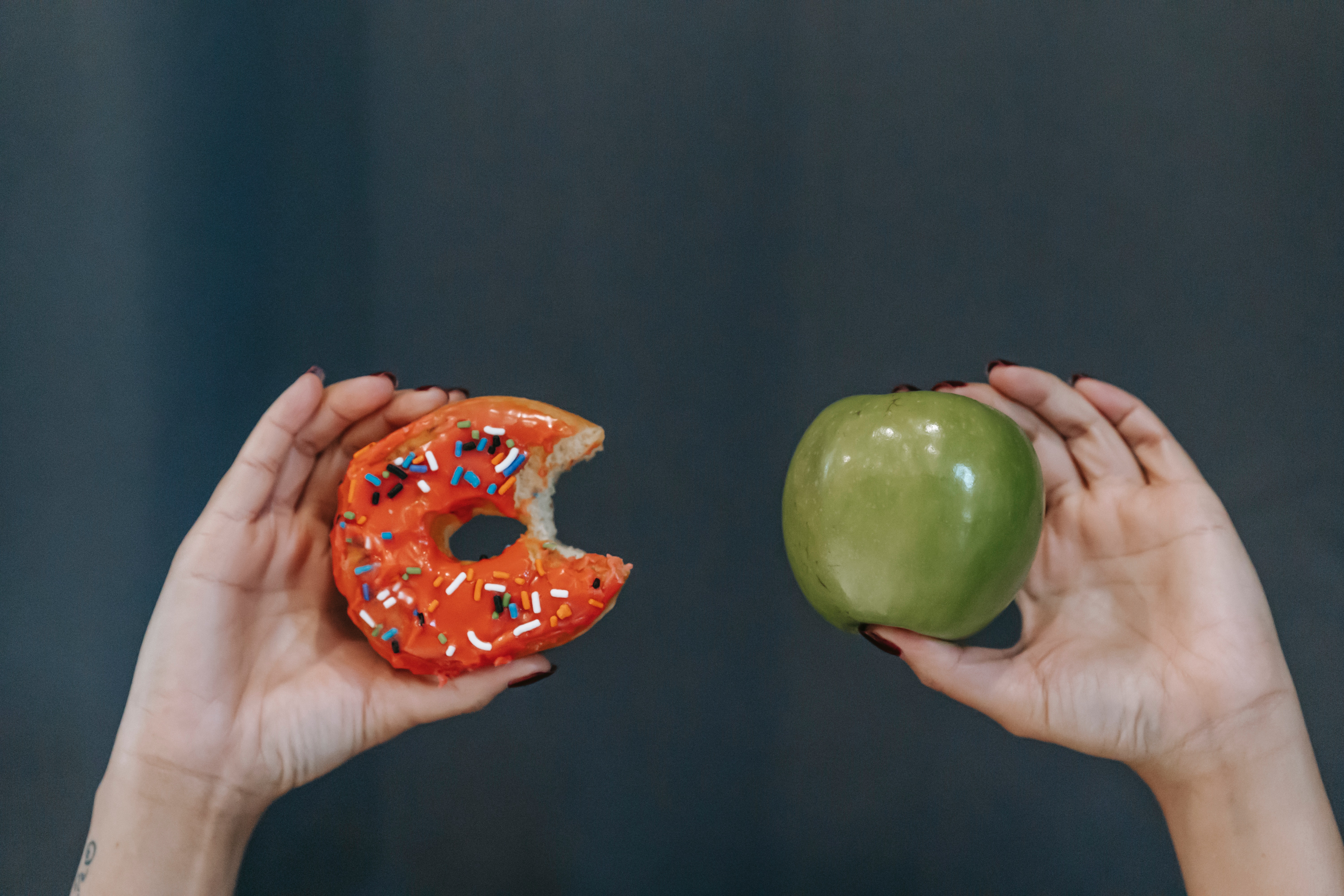
2. Calorie Deficit
For fat loss, make sure your calories burned (Total Daily Energy Expenditure or "TDEE") are higher than your calories consumed.
For weight gain, make sure your calories consumed are higher than your calories burned (TDEE).
In whichever sustainable diet you choose (i.e. Vegetarian, Vegan, Carnivore, Flexible, Keto, Whole 30, Paleo, etc.) PLEASE find a way to adhere to this proven law of fat loss. I guarantee it will work as long as you're consistent.
READ THIS AGAIN: A calorie deficit (aka negative energy balance) stands alone as the the only thing responsible for fat loss regardless of the type of diet.
This does not mean you should forget about the rest of the elements to sustainable fat loss and maintenance, but it does mean that it is the only guarantor for it.
THE MEANS: Whichever diet you can sustain.
THE END: Losing fat and maintaining the results
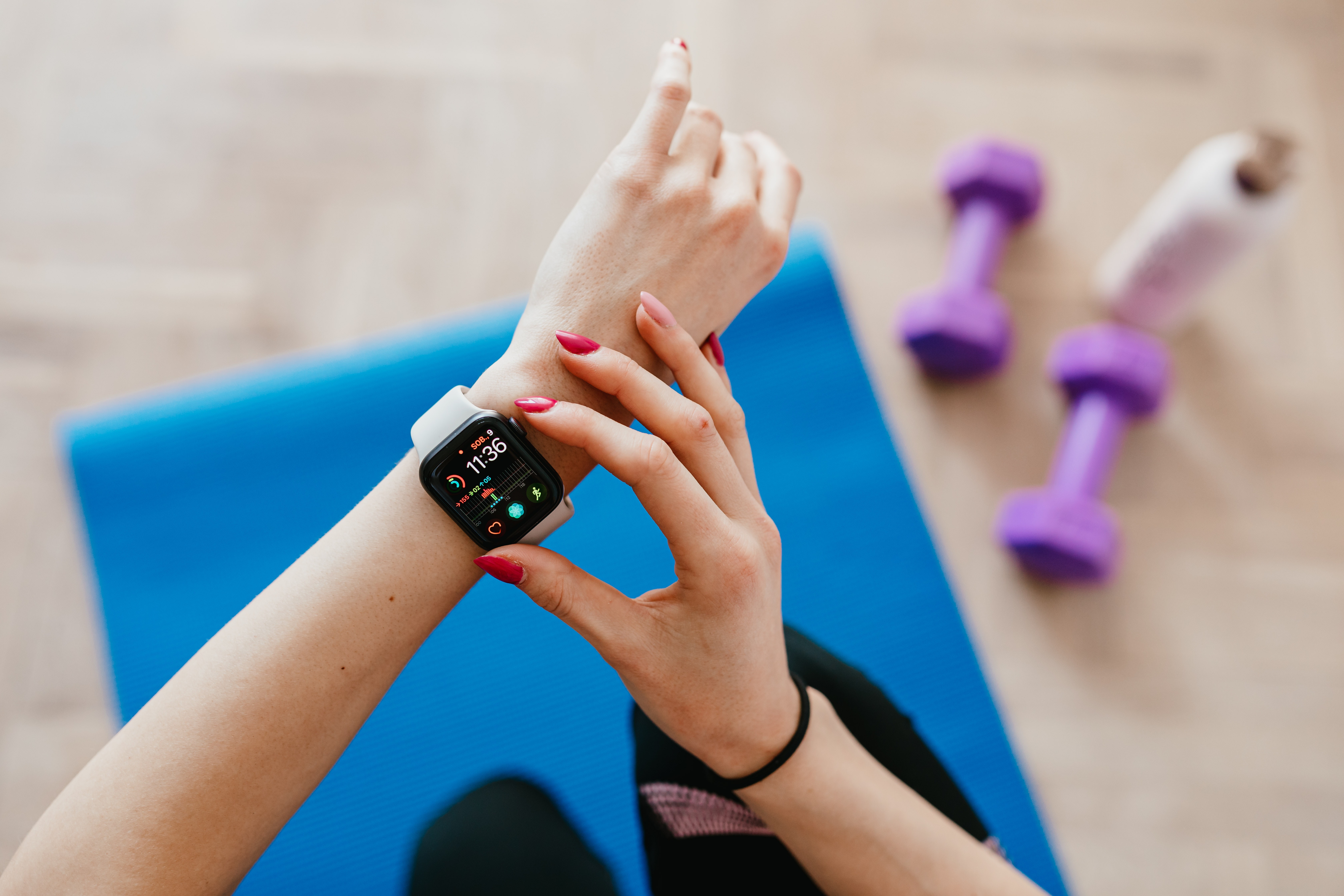
3. Exercise
You might be surprised that exercise falls to the third most important practice on this pyramid. While exercise is essential for a high quality of life - both physically and mentally, it's not actually necessary for fat loss by itself.
A professor at Kansas State University proved that a calorie deficit is all that was needed to lost 27 pounds in 2 months.
His method? Consuming 1,800 calories or less (creating a 800 calorie deficit or more) each day.
The food? Everything he ate came from convenience stores - Twinkies, Little Debbie cakes, chips, etc.
Whole foods? Nope.
Processed foods? Yep.
Dietician? Nope.
Tracking calories? Yep.
Exercise? Nope.
Energy Deficit? Yep.
To be clear, I am not suggesting that whole foods, dietitians or exercise is bad or even irrelevant. In fact, they are extremely relevant to our long-term success. Additionally, I am obviously a huge proponent of each given the nature of my work.
What I am saying is what this professor and the other researchers who replicated the results after him are saying:
A calorie deficit is the only way to fat loss, and how you achieve that calorie deficit can come in many different forms.
Returning to the topic of exercise, however, the benefits aren’t just limited to the body, but also to the mind (and spirit, if you believe in that). Here are some of the primary benefits:
- Muscle growth and maintenance
- Increased energy output
- Improved cardiovascular health
- Improved mental health and the ability to combat stress and regulate your mood
- Decrease in persistent inflammation
- Reduced pressure on joints
- Increased confidence
- Improved physique/aesthetic
- The list goes on...
An important note on exercise and building/maintaining muscle mass:
Regardless what exercise regiment you follow, do not overlook the importance of gaining or maintaining muscle mass (Lean Body Mass or "LBM"). This helps to keep your metabolic rate up (highly beneficial for long-term body weight maintenance), not to mention many of the other basic benefits.
This is why I recommend and prescribe strength training in all of my programs.
There are so many ways to exercise:
- Running/Walking
- Strength Training
- Barbell Training
- Yoga
- Spin Class
- Body Workouts
- Home Workouts
- YouTube Programs
- Pilates
- Biking
- Dancing
- Swimming
As Nike so eloquently put it: Just Do It. And if you find it’s not sustainable anymore, pivot to something that is.

4. Self-Monitoring
Self-monitoring is a way to just “check-in” with yourself. Your thoughts, feelings, progress, etc.
This includes things like:
- Tracking your food intake
- Tracking your workouts
- Weighing yourself | Taking body measurements
- Journaling your experiences
- Recalculating based on progress/Adjusting your TDEE and caloric intake
- And more...
While there is no need to do all of these things, I wanted to ensure you got the picture of what "self-monitoring" means.
A study was conducted of people who were able to achieve long-term weight loss and the maintenance of those results. Among a number of common traits and practices that the participants shared, there was "self-monitoring." It helped them to track their progress, make informed adjustments each day, and it kept them accountable to themselves by having the regular check-ins.
For example: Counting calories - can you lose weight without doing it? Of course, as long as you are burning more calories than you consume. But many of us struggle to know we are in a deficit without keeping track or at least having a reference point of accurate data to start with. And worse, if we begin to regain weight, we don't know how to fix it.
Other examples:
- Comparing pictures today from 6 months ago to reassure yourself that your efforts are working
- Reading journal entries from earlier in the year to see how far you've come in confidence and knowledge
- Adjusting your exercise and diet in accordance to the TDEE changes that come from body recomposition
In short, having reference points to see how far you've come and how to make educated adjustments are incredibly helpful.
A Dietary "Budget"
Just like having a financial budget to improve your financial wellness, I can’t stress to you enough how valuable having a "Dietary Budget” is as well.
The goal is to create awareness and understanding of the effects of what we consume and how we move. If you reach a point where you're achieving your body composition goals without tracking your calorie intake, weight, etc., more power to you! But again, studies indicate that this is one of the most common practices in those who successfully lose weight and keep it off. My suggestion is to, at the very least, keep this in mind as you go.
Please please please take this request seriously and try to remove the negative stigma, shame, and annoyance from tracking food intake, workouts and/or progress.
Try to reframe your thinking.
If you had the opportunity to take on a special project that defined your career and came with a huge bonus if you succeeded, you wouldn’t just wing it because it was “annoying” to plan and track your progress, would you?
How much more important is it for you and your loved ones that you live a high quality of life? Any parent (of humans or pets) recognizes the art of monitoring and adjusting based on the health and development of our little ones. We care a whole lot about these tiny creatures, and we want what's best for them. So what do we do? We read books and watch videos. Go to classes and ask our friends. Consult with our doctors, vets, etc. what is best.
All in all, we are so invested in their health and success that we put in great effort, not just up front, but all along the way to make sure their development is the best it can be. We try, we monitor progress, and we adjust.
So why can’t we do this for ourselves as well?
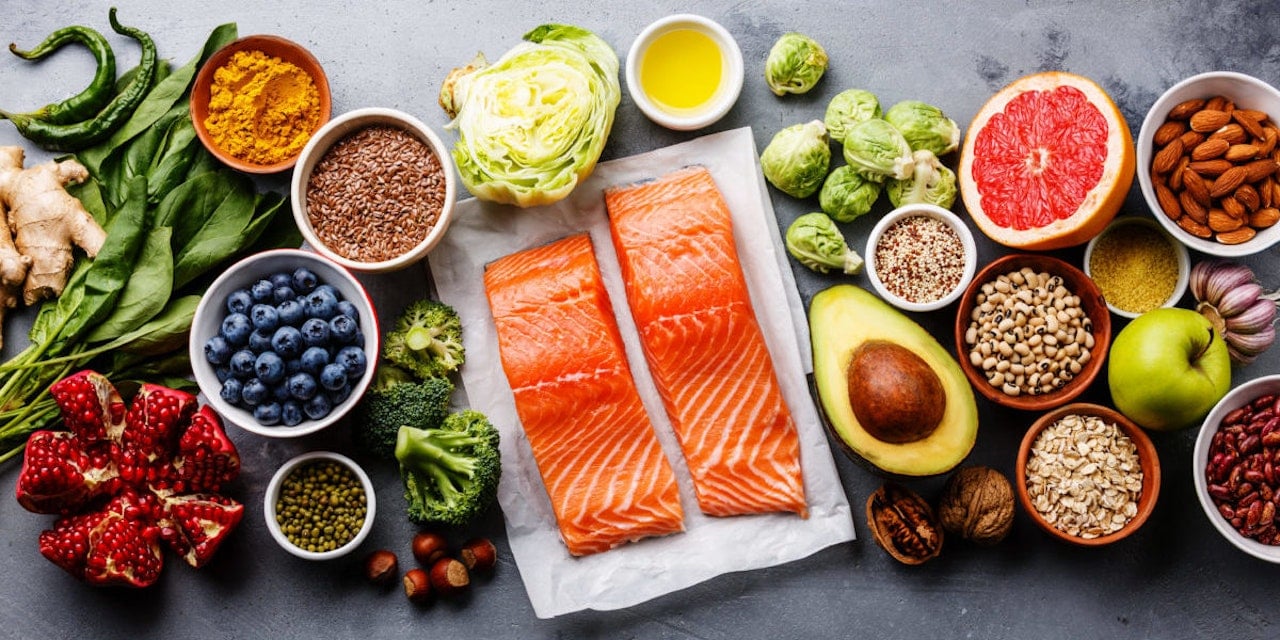
Macronutrients
Macronutrients or “Macros” are the three primary nutrients that your body needs in "macro" (large) amounts. I’ll explain more about each one below, but here are the three:
- Protein
- Carbohydrates (Includes Fiber)
- Fat
During strategic weight loss and gain phases, people usually select a certain percentage of each macronutrient to make up their caloric intake. An example might be:
- Carbs | 40%
- Fat | 20%
- Protein | 40%
This means that, whatever your caloric intake is that you set in your calculation stage, your carbs, fat, and protein intake will also be made up of the percentages you selected. Based on your goals, you may break down your daily macro intake differently. If you want to get really nerdy about this stuff, it turns out that each macro carries a specific number of calories per gram:
- Carbs - 4 calories per gram
- Fat - 9 calories per gram
- Protein - 4 calories per gram
If you set your daily calorie intake budget to 2000 calories, your Macro breakdown might look something like this:
- Carbs | 40% | 200 grams
- Fat | 20% | 44 grams
- Protein | 40% | 200 grams
For the carbs, 40% of 2,000 calories is 800 calories. Since carbs carry 4 calories per gram, the math is simple. 800 / 4 = 200 grams. So 800 calories and 200 grams of my daily intake will be from carbs.
A Simpler Approach to Counting Macros
For me, I just focus on the calories and the macros. I make sure my Protein is high, and I let MyFitnessPal or one of the other free Calorie Tracking apps do the math for me when I log my calories. I don't get so granular as to plan out my meals to the exact macronutrient count, but I usually come close because I’ve tweaked and adjusted each day for the last year, and I'm happy with the results.
During fat loss phases, my daily calorie intake hovers around 1,700 with 40% of my calories coming from Protein, 40% from Carbs, and 20% from dietary Fat.
For someone looking to lose fat and maintain or grow muscle, you probably couldn’t go wrong with the same breakdown of macros, though your caloric deficit will be unique to your TDEE and your goals.
Exceptions to the point above are, of course, for those with special dietary requirements. As always, consult with your doctor first.
5. Protein and Fiber Intake
If you'd like to read my short article entitled, "5 Reasons Why Protein Is So Important", click here. Otherwise, here is a quick overview of it's importance in our diet.
Protein
Our bodies are constantly going through the metabolic process of muscle protein breakdown (aka the breakdown of muscle mass). Protein is an essential macronutrient that primarily enables us to achieve muscle protein synthesis (aka the growth of muscle mass).
To outpace muscle protein breakdown with muscle protein synthesis, we need to overload our muscles through exercise and feed our bodies with adequate amounts of protein. This results in the maintenance and growth of muscle mass which comes with benefits like:
-
- Relief of pressure from joints, making it easier to exercise
- Exercise improves strength, balance, mobility, and physique
- Exercise improves our mental health
- Increased metabolic rate (calories burned) through growth of muscle
- And most importantly (for the sake of fat loss), because muscle is metabolically active tissue, having more muscle mass per pound of body weight improves the likelihood of long-term success in maintaining your desired body weight
These are all the physical benefits of adequate protein intake, but also from a dietary perspective, protein sources are typically very high on the tiety index, meaning that they are more filling and lower in calorie than many other carbohydrate and fat sources.
Fiber
Fiber is a type of carbohydrate that the body can't digest. Though most carbohydrates are broken down into sugar molecules called glucose, fiber cannot be broken down into sugar molecules, and instead it passes through the body undigested.
Foods that are high in dietary fiber are typically very filling, lower in calorie, rich in vitamins and nutrients, and aid in digestion. This is why you may find people drinking water-soluble fiber sources as a means to help increase the frequency of bowel movements, reduce their hunger, and potentially decrease their overall calorie intake.
On a related note, having a diet full of whole foods like fruit, vegetables, fish, lean meats and low-fat dairy will help most people get close to meeting their ideal calories, protein and fiber intake simply because of their makeup.
Again, I would highly recommend taking a look at the Satiety Index for reference of foods that can help contribute to your dietary goals, but for the sake of this section, just know that consuming a healthy amount of fiber is incredibly beneficial for digestion, nutritional intake and fat loss.

6. Carbohydrates and Dietary Fat
We've established that protein is the most important macronutrient to prioritize in your diet, so let's review the two remaining macros - Carbs and Fat.
Carbohydrates
Carbohydrates are the sugars, starches and fibers found in fruits, grains, vegetables and milk products. Carbs are also found in processed foods like crackers, cereal, and more.
For people who are not in a state of ketosis (which is most of the population), carbs serve as the main source of energy for our bodies. They aid in digestion, muscle repair, and numerous bodily functions essential for life.
Complex Carbs vs. Simple Carbs
The main thing you should know from a nutritional perspective is that you would benefit from leaning towards carbs you get from whole food sources far more than you can from processed foods. On a related note, you should probably aim to consume more Complex Carbs than Simple Carbs:
- Simple carbohydrates are in foods such as table sugar and syrups, but also simple carbs also come in the form of bananas, mangos, apples, honey, and even some dairy products which are classified as simple carbs. The basic test of whether the source of your high simple carbohydrate food is "good" or "bad" for you comparatively is by determining if it's a whole food (good) or processed (bad), high in fiber (good) or high in refined sugar (bad).
- NOTE: No food is inherently "bad" per se. It's more about how much you have of it in relation to your overall caloric and nutritional intake that really matters. The occassional Laffy Taffy isn't going to hurt someone with average health, but if that's all they eat, their body is going to react poorly to the lack of balanced nutrition required sustain a healthy existence.
- Complex carbohydrates contain longer chains of sugar molecules than simple carbohydrates. The body converts these sugar molecules into glucose, which it uses for energy.
Simple carbs can come in handy when you need a short burst of energy like right before a workout or if you're feeling weak (i.e. drinking apple juice after donating blood). A friend and former body-builder recommends 2-3 chocolate rice cakes (Simple Carbs) before a workout for that added boost of short-term energy. As long as the calories don’t put him in a caloric surplus, they don’t hurt him (from a weight loss perspective).
I, on the other hand, typically go with a gala apple and a shot of espresso. But both work just fine.
Conclusion on Carbs
So yeah, regarding carbs overall. They're not just OK, the right sources are good for you.
If you decide to follow a “Low-Carb”, “Slow-Carb” or “No-Carb” diet to lose weight, maintain that weight loss, and it works, more power to you. Do what works for you for the long-term.
Please just understand that it’s not the only way to lose weight, and I ask that you don’t discourage someone who hates that diet from finding what works for them.
Dietary Fat
For the most part, understanding the various different types of fats to the ‘nth degree isn’t necessary for weight loss or weight gain. That information comes at levels 202, 303, or higher of one's personal fitness and nutrition journey.
For the sake of giving you the basics, however, here you go:
- Providing your body energy and to support cell growth.
- Protecting your organs and help keep your body warm.
- Helping your body absorb some nutrients and produce important hormones, too.
Types of Fat
Unsaturated Fats: Liquid at room temperature | Considered beneficial Fats
- Monounsaturated Fats: Have a single-cell compound
- Polyunsaturated Fats: Have multiple chemical bonds
Examples:
-
- Olive, peanut, and canola oils
- Avocados
- Nuts such as almonds, hazelnuts, and pecans
- Seeds such as pumpkin and sesame seeds
- Sunflower, corn, soybean, and flaxseed oils
- Walnuts
- Flax seeds
- Fish
- Canola oil – though higher in monounsaturated fat, it’s also a good source of polyunsaturated fat.
Omega 3’s come from Polyunsaturated Fats.
Saturated Fats: Dairy products | Animal Foods | A few plants
As it turns out, Saturated Fats have made a comeback as being pretty comparable in health benefits to Unsaturated Fats. Researchers believe that there may be benefits to reducing your Saturated Fats intake if you replace it with Unsaturated Fats.
Examples:
-
- Cheese
- Milk
- Butter/Ghee
- Fatty cuts of meat like sausage, bacon etc.
- Coconut Oil
- Etc.
Trans Fats: Liquid oils turned into solid fats during food processing
-
- Baked goods, such as cakes, cookies and pies
- Shortening
- Microwave popcorn
- Frozen pizza
- Refrigerated dough, such as biscuits and rolls
- Fried foods, including french fries, doughnuts and fried chicken
- Non-dairy coffee creamer
- Stick margarine
To Recap:
- Unsaturated Fats: Good
- Saturated Fats: Probably fine, but if you reduce them, replace them with Unsaturated Fats
- Trans Fats: Probably best to limit/avoid
A Quick Note on Sugar and Sodium
You need them in your body, but it's best to limit them to natural sources of sugar and sodium keep refined sources to a minimum. Heavily processed foods often contain refined sugar and large amounts of sodium, and this usually translates to high-calorie/less filling foods.
This is a large reason why we see more obesity in poorer communities which don't have as much access to whole foods compared to their more affluent neighbors. The food in low income communities are often cheap, but they are also usually packaged, processed, nutritionally limited and high in calorie.
These are foods like hot fries, honey buns, chips, Ho-hos, hot dogs, and other things you'd find at a corner store. If you review the satiety index, you'll quickly find how low these types of foods rank.
Now, you may wonder how the Kansas State professor I mentioned earlier in this article had lost weight on the "Twinkie Diet" if the makeup of the food is as bad as I'm describing, but it's important to remember that he counted his calorie intake each day to ensure that he was in an energy (calorie) deficit.
I know it seems like a paradox, but a better way to demonstrate the link between nutrition, calorie intake and fat loss is displayed in the table below:
| DIET + NUTRITION | EFFECTIVENESS |
| Whole foods diet + calorie deficit | Optimal, but can be hard to sustain |
| Flexible diet + calorie deficit | Effective and likely to be more sustainable than a more restrictive diet |
| Junk food diet + calorie deficit | Will lead to fat loss in the short-term, but not recommended for long-term health |
| Whole foods diet + calorie surplus | Lots of nutritional benefits, but ultimately harmful because it will cause weight gain and the health complications that come from it |
| Junk food diet + calorie surplus | Worst combination. This diet lacks adequate nutrition, and it's harmful because it will cause weight gain and the health complications that come from it. Not to mentioned the addictive properties of highly processed foods. In essence, there is no upside to this. |
Again, this chart is pertaining to fat loss specifically. There are always other considerations to make depending on a person's overall wellness goals.
I am Anti...Anti-Sugar
While I don't recommend high sodium or sugar diets, I also naturally resist zealots of most kinds, and this includes anti-sugar/processed food zealots. There are several reasons for this:
- I'm rebellious against most forms of abstinence or extremism. While I recommend keeping the consumption of processed sugars (like candy) and high-sodium foods to a minimum, 100% abstinence usually results in rebellion and binging for most people.
- Just because something worked for someone doesn't mean it works for everyone.
- The real boogeyman is eating into a consistent caloric surplus.
Think of it this way. If, for 2 years, someone gives up sugar but they're in a caloric surplus of 300 calories a day by eating whole, vitamin-rich foods, they will just end up as a really nutritious person who has gained over 30 pounds. All the nutrition in the world doesn’t make up for the high cholesterol, high blood pressure, and damage to your heart, joints, and lungs caused by obesity.
Like nearly every diet as it's marketed, "no sugar" or "no processed foods" is only as effective as your ability to sustain it. For most people, however, this is doable for like 3 days maximum.
Again, if it works for you, then you have my full support. But if it’s not sustainable for you, please don't give up on dieting and exercising altogether.
There are many ways to achieve your fat loss goals without feeling as restricted.
7. Supplements
Pay attention to the word “supplements”. Their function is right in the word itself - To supplement your diet/nutrition/efforts. In other words, when you don’t have enough of something because of your diet, supplements help you get there.
Examples of Supplements:
- Whey protein powder
- Creatine monohydrate
- Vitamins and multivitamins
- BCAA’s
- Digestive enzymes
- Pre-Workout
- Probiotics
- Botanicals or herbs
- Etc.
Dietary supplements come in a variety of forms, including tablets, capsules, gummies, and powders, as well as drinks and energy bars. They are meant to help you complete your well-balanced nutritional regimen, not to be a replacement for one.
You'll notice that supplements fall last on the pyramid of importance for fat loss. It's not because they don't matter. It's because other factors matter more.
For vegetarians, vegans, keto followers and others, supplements are helpful for meeting certain vitamin requirements that are otherwise lacking due to their natural food intake.
For those needing more protein, whey protein powder can be a great supplement to help get you to the total amounts you need each day.
For someone who struggles with regular soreness despite stretching and adequate nutrition, BCAA's can be helpful to heal faster.
In short, supplements are meant to fill any gaps we have in our daily diet as it pertains to our overall health and fitness goals.

Final Thoughts
Going through a fat loss phase is never easy - regardless if it's your first time or your 30th, your first day in your journey or your last. No matter how you slice it, the feelings of being hungry and tired (and often sore from exercise) are unpleasant, especially when compared to the soft, cushy, and automated lifestyle of living in the 21st century for most of us.
While there are many strategies (like those that we coach our clients on) to make it less taxing, more effective, and more enjoyable, one thing I hope you've learned from this article is that fat loss certainly doesn't have to be difficult to understand.
Will you need to refresh your memory on certain things in the future? Of course. Might new information come out that helps you refine your knowledge on the topic? Absolutely.
But I've always believed that learning the basics to fat loss, muscle growth, and behavioral psychology/habit science is all anyone needs to take the simple and immediate actions that can completely change their life. All other information is just a bonus.
This has certainly rung true for me, my team here at RBLD Fitness as well as our clients who have turned their lives right-side up after going through our program.
Change starts with understanding and continues with execution.

Summary
- Fat loss is simpler than we think, and there are a myriad of ways to achieving it. Your most optimized and enjoyable path to doing so is uniquely yours to find and implement, though it takes some experimentation and trust in the process. If you need help, please don't hesitate to ask us.
- Some Basic Biology on Fat Loss:
- Energy = Calories
- Approximately 3,500 calories = 1 pound of body fat
- Calorie Surplus (+) - Consuming more calories than you burn results in the storage of that surplus energy as body fat.
- Calorie Deficit (-) - Consuming fewer calories than you burn results in the burning of those calories as well as stored body fat for energy/fuel (aka Fat Loss).
- Calorie Maintenance (=) - Consuming the same number of calories as you burn (maintenance) results in retaining the same amount of body fat.
-
- Your biology and your activity make up your TDEE (Total Daily Energy Expenditure; aka total daily calories burned)
- TDEE changes with metabolic adaptation. Don't overlook this.
- Weight loss and Fat loss are two different things:
- Weight Loss = The loss of the measured weight of your entire body including fat, bone, muscle, water, organs, etc.
- Fat Loss = The loss of body fat only
- The 7 most important components to achieving sustainable fat loss are (from most important to least):
- Adherence/Sustainability
- Calorie deficit
- Exercise
- Self-monitoring
- Protein and Fiber intake
- Carbs and Fat intake
- Supplements/Vitamins
- Losing body fat is not always easy, but it is always worth it. As difficult as it may be to execute, it doesn't have to be difficult to understand.
- With the information in this article, you can move forward with confidence that your next fat loss phase will result in changes that last!

Teddy Woolsey
I am the owner of the RBLD Fitness Unlimited Coaching Program and RBLD Fitness App
I also write about the intersection of fitness and sustainable behavior change
Let's connect on Instagram: @tedwoolsey
Our team at RBLD Fitness is here to help you at any time, whether it's through our flexible and affordable mobile app or if you're looking for a more hands-on coaching experience.
Visit our page to learn more.
Additional References:
-
https://www.hsph.harvard.edu/nutritionsource/what-should-you-eat/fats-and-cholesterol/types-of-fat/
-
Research is compiling to suggest that Omega 3’s are actually not as necessary for promoting heart health as once thought. A study came out years ago that made the initial claim, an entire industry of harvesting and selling Omega 3’s emerged, and that is why it’s in our faces everywhere these days. Those who are likely to benefit most from Omega 3 supplements are those with heart problems. See: https://www.health.harvard.edu/staying-healthy/should-you-be-taking-an-omega-3-supplement
-
https://www.cdc.gov/diabetes/prevention/pdf/postcurriculum_session2.pdf
-
https://www.healthline.com/nutrition/benefits-of-bcaa#TOC_TITLE_HDR_
-
https://ods.od.nih.gov/factsheets/WYNTK-Consumer/#:~:text=Dietary%20supplements%20come%20in%20a,%2C%20probiotics%2C%20and%20fish%20oils.
